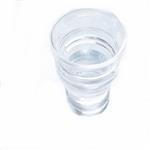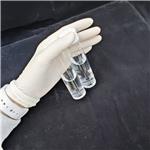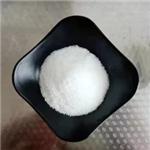Very diffusive and penetrating, sweet-ethereal, fruity odor. In extreme dilution reminiscent of Apple peel with a slightly fatty Peachlike undertone.
Sweet, but not very powerful taste in
aqueous media. Apple-like or Banana-Pineapple-like in dilutions below 100 ppm.
Methyl butyrate, also known as methyl butanoate , is an ester with a fruity odor pineapple, apple, and strawberry. At room temperature, it is a colorless liquid with low solubility in water, upon which it floats to form an oily layer. Although it is flammable, it has a relatively low vapor pressure ( 40 mmHg at 30°C), so it can be safely handled at room temperature without special safety precautions.
Methyl butyrate is colourless liquid that has an apple-like odor and a corresponding sweet taste that is not very powerful. Below 100 ppm, it may have a banana-pineapple flavor. Miscible in ethanol and ether, slightly soluble in water (1:60). May be prepared from methyl alcohol and butyric acid in the presence of concentrated H2S04.
Metyhl butyrate occurs naturally in pineapple oil, round grapefruit juice, apple juice, kiwi and mushrooms. It is used as a flavor ingredient in fruit and rum flavoring for beverages, ice cream, candy, and baked goods.
Methyl butyrate is used as a solvent for ethylcellulose
and nitrocellulose resins. It is also used in lacquers
and perfumes and in the manufacture of rum and fruit
flavors.
Methyl butyrate is produced from methyl alcohol and butyric acid in the presence of concentrated sulfuric acid. The synthesis of methyl butyrate by the reaction between butyric acid and methanol with acidic ion exchange resin as a catalyst in presence of ultrasound irradiation was successfully carried out.
Methyl butyrate is an important raw material and intermediate used in organic synthesis, pharmaceuticals, agrochemicals and dyestuff fields.
ChEBI: Methyl butyrate is a fatty acid ester.
Detection: 1 to 43 ppb. Aroma characteristics at 1.0%: pungent, ethereal, fruity, fumey and fusel with a
fermented, cultured, creamy undernote.
Taste characteristics at 10 ppm: fruity and apple-like with a sweet almost buttery, nutty and creamy nuance,
fusel-like, impacting, and estry with a cultured dairy, acidic depth.
Methyl butyrate appears as a clear colorless liquid. Flash point 57°F. Less dense than water and slightly soluble in water. Hence floats on water. Vapors heavier than air.
Highly flammable. Slightly soluble in water.
Methyl butyrate reacts exothermically with acids to generate alcohols and carboxylic acids. Strong oxidizing acids may cause a reaction that is sufficiently exothermic to ignite the reaction products. Heat is also generated by interaction with basic or caustic solutions. Flammable hydrogen is generated by mixing with alkali metals and hydrides .
Flammable, dangerous fire risk.
Irritating to the eyes, nose, throat, upper respiratory tract, and skin.
HIGHLY FLAMMABLE: Will be easily ignited by heat, sparks or flames. Vapors may form explosive mixtures with air. Vapors may travel to source of ignition and flash back. Most vapors are heavier than air. They will spread along ground and collect in low or confined areas (sewers, basements, tanks). Vapor explosion hazard indoors, outdoors or in sewers. Runoff to sewer may create fire or explosion hazard. Containers may explode when heated. Many liquids are lighter than water.
Methyl butyrate is occasionally used as a masking
agent in industrial perfumes especially where
the problem is to mask very volatile malodors,
etc. The type of odor is particularly suitable
to cover sulfuraceous odors.
It is, however, much more widely used in
flavor compositions for imitation Apple,
Banana, Pineapple, Melon, Peach, Rum and
Arak, and in various fruit complexes.
The concentration used is equivalent to
about 20 to 100 ppm in the finished consumer
product.
Moderately toxic by
ingestion and skin contact. A skin irritant. A
very dangerous fire hazard when exposed to
heat, flame, or oxidizers. Can react
vigorously with oxidizing materials. To fight
fire, use alcohol foam, CO2, dry chemical.
When heated to decomposition it emits
acrid smoke and irritating fumes. See also
ESTERS.
Methyl butyrate, one of the odorous compound present in different types of adhesive (hotmelt, vinyl acetate ethylene, starch, polyvinyl acetate and acrylic) used in food packaging, was identified by GC-O-MS (gas chromatography–mass spectrometry–olfactometry).
Not listed by ACGIH, California
Proposition 65, IARC, NTP, or OSHA.
Treat the ester with anhydrous CuSO4, then distil it under dry nitrogen. [Beilstein 2 IV 786.]
[1] Ruth Winter, A Consumer's Dictionary of Food Additives, 7th Edition, 2009
[2] Laurent Ducry and Dominique M. Roberge, Dibal-H Reduction of Methyl Butyrate into Butyraldehyde using Microreactors, Organic Process Research & Development, 2008, vol. 12, 163-167



